News
Checking for any transmission fluid leakage on my Jeep Cherokee
As there is already an engine oil leak, any transmission fluid, if leaked, would be diluted.
BHPian Jeroen recently shared this with other enthusiasts.
I wasn’t happy with the possibility of the hoses on the transmission lines leaking. So today I decided to do a little test to determine what is happening.
These two photographs are taken from underneath the sump looking up at the forward end of the engine.
You can see the pulley/torsion dampener. There is a visible sign of engine oil leakage. This is a known issue with the forward crank seal. That’s why I will be taking the pulley off and replacing the seal soon. But I was concerned with the two hoses. In particular where the hose is attached to the metal tube. These are crimped connections and can not be repaired. Once they start leaking you are done for. Usually, you can tell what kind of oil is leaking by smelling, tasting and colour. However, as there is already an engine oil leak, any transmission fluid would be diluted.
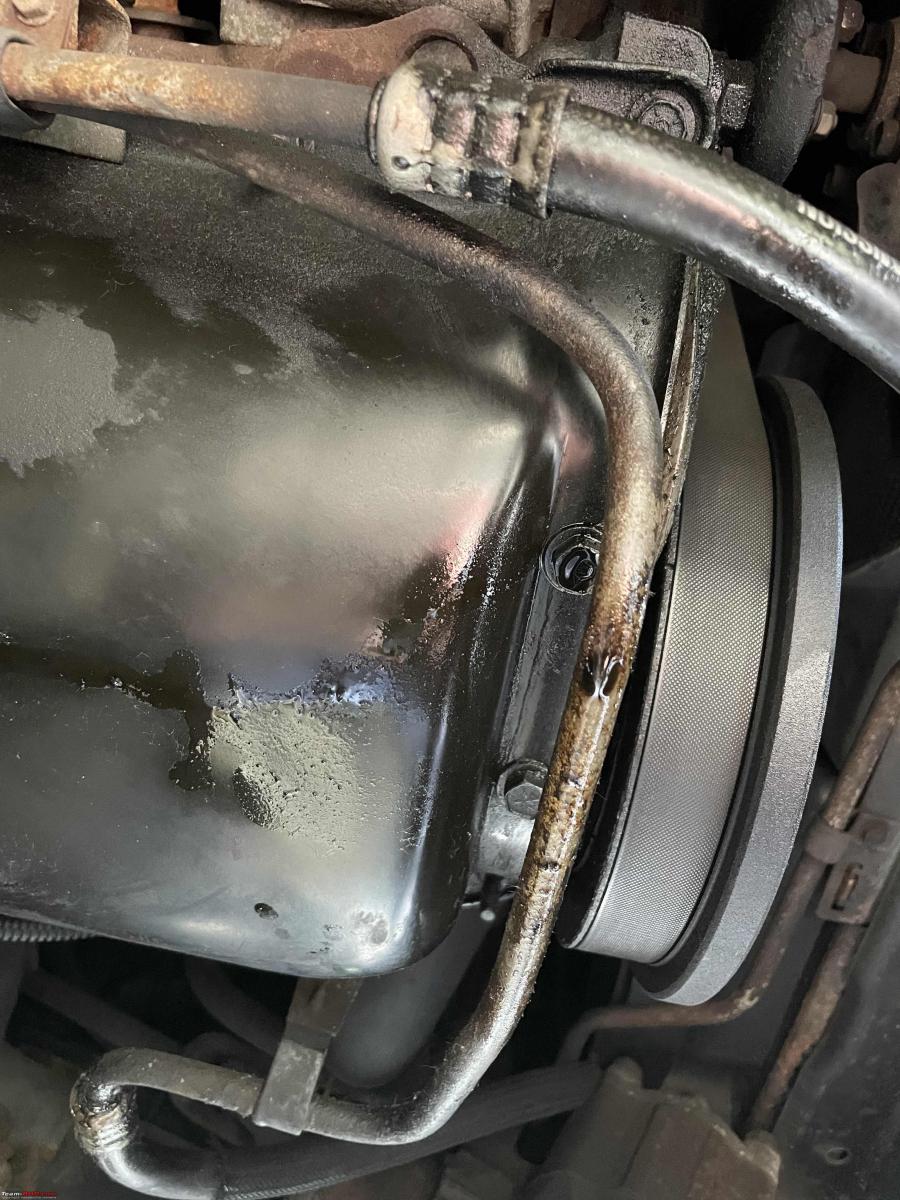
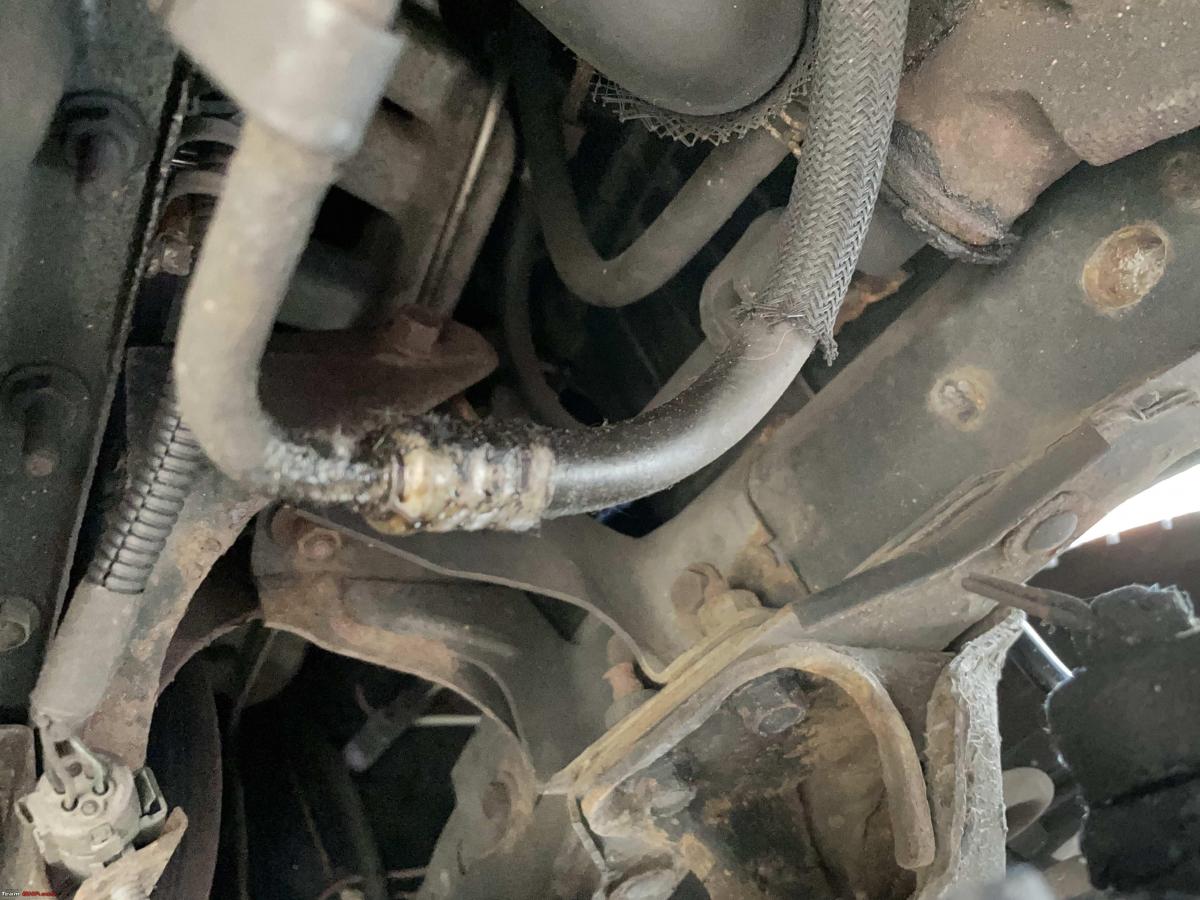
I cleaned both connections very thoroughly and wrapped them in a thick layer of workshop paper towel. Then I wrapped plastic around it and taped it all.

Next, I took a test drive to my favourite tool shop HBM. About 80-90 km back and forth. So good enough to see if there was any transmission fluid weeping through the connectors.
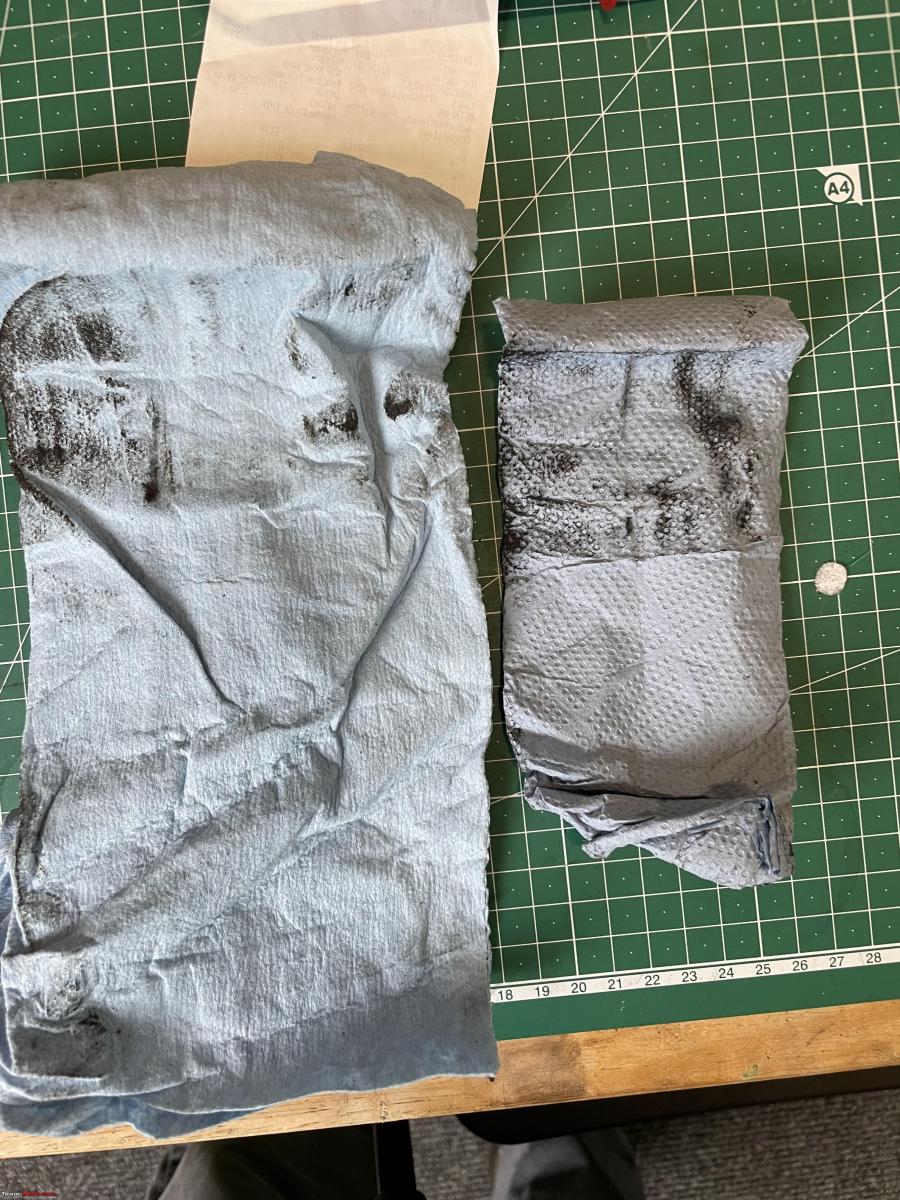
Absolutely bone dry! Big relief. However, I might still have to replace these. I will still have to see if I can get the other end of each hose, which is attached to the heat exchange in the radiator, undone without damaging them. But this is one worry less!
I went to HBM as I need a special pulley/flywheel puller. Got this nice little set, for Euro 14. To put that in context, Euro 14 will get you three cups of coffee these days.
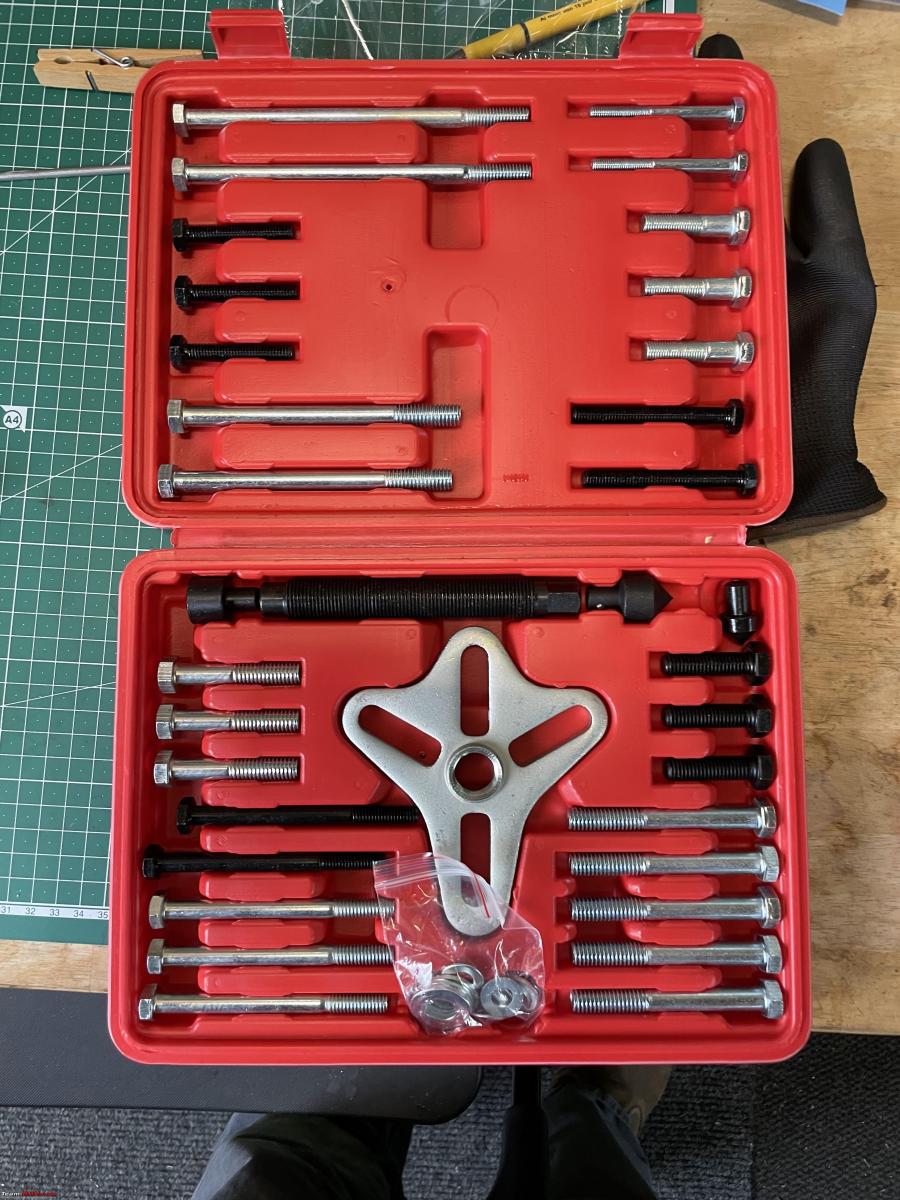
The challenge with using these pulley pullers is always space. There isn’t an awful lot of room in front of the pulley. So I thought the original bolts were likely to be too long. I had to get some smaller ones. The problem is that these bolts are not metric. Some weird-ass Imperial measure. Luckily, we have a renewed Classic Jaguar restoration shop nearby. I went to see them some time ago. Impressive shop!
As they work exclusively on old classic Jaguars, I figured they must have boxes full of unusual and weird threaded bolts and nuts. I wasn’t disappointed. I brought the original bolt, and the guy looked at it for 0.1 seconds; “Ah, looks like a UNC, 3/16”. Sure enough, I have now three shorter bolts that fit!"
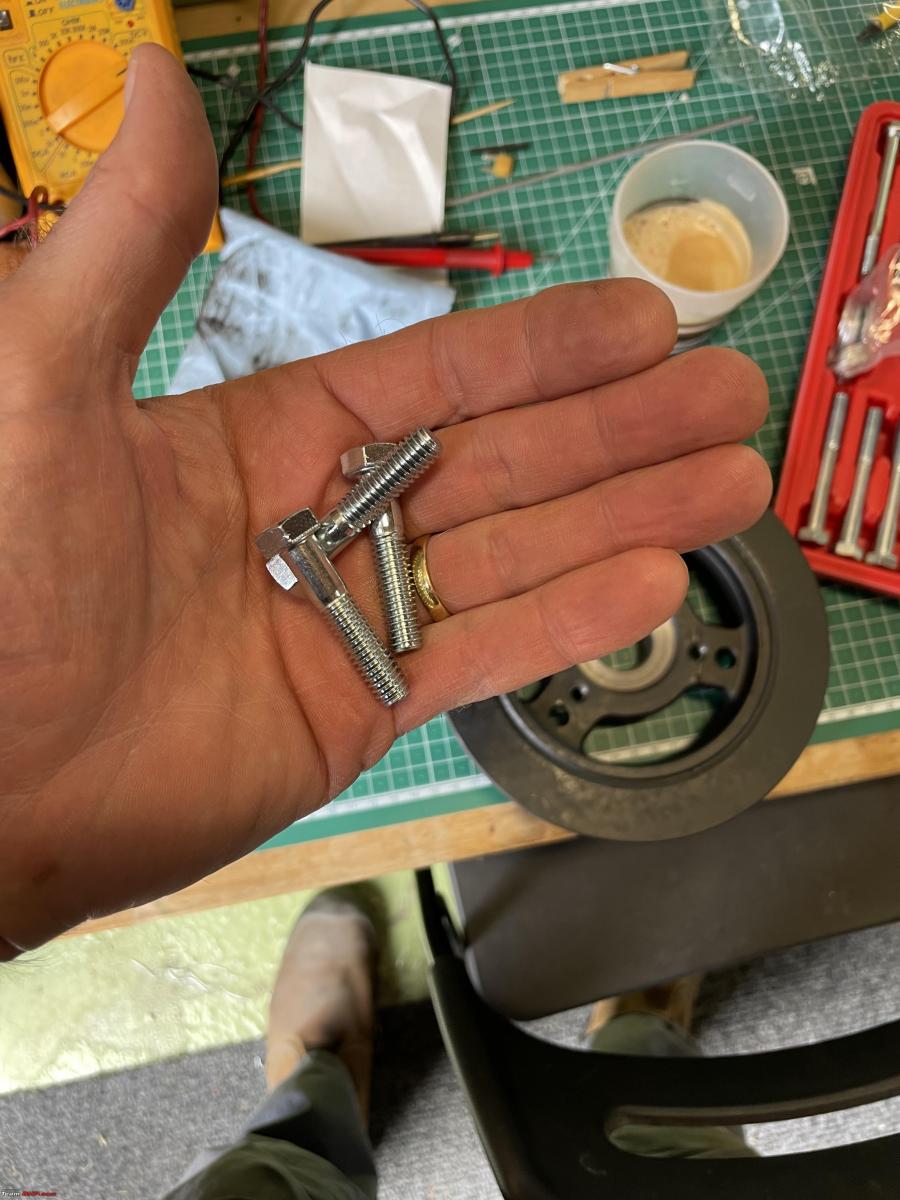
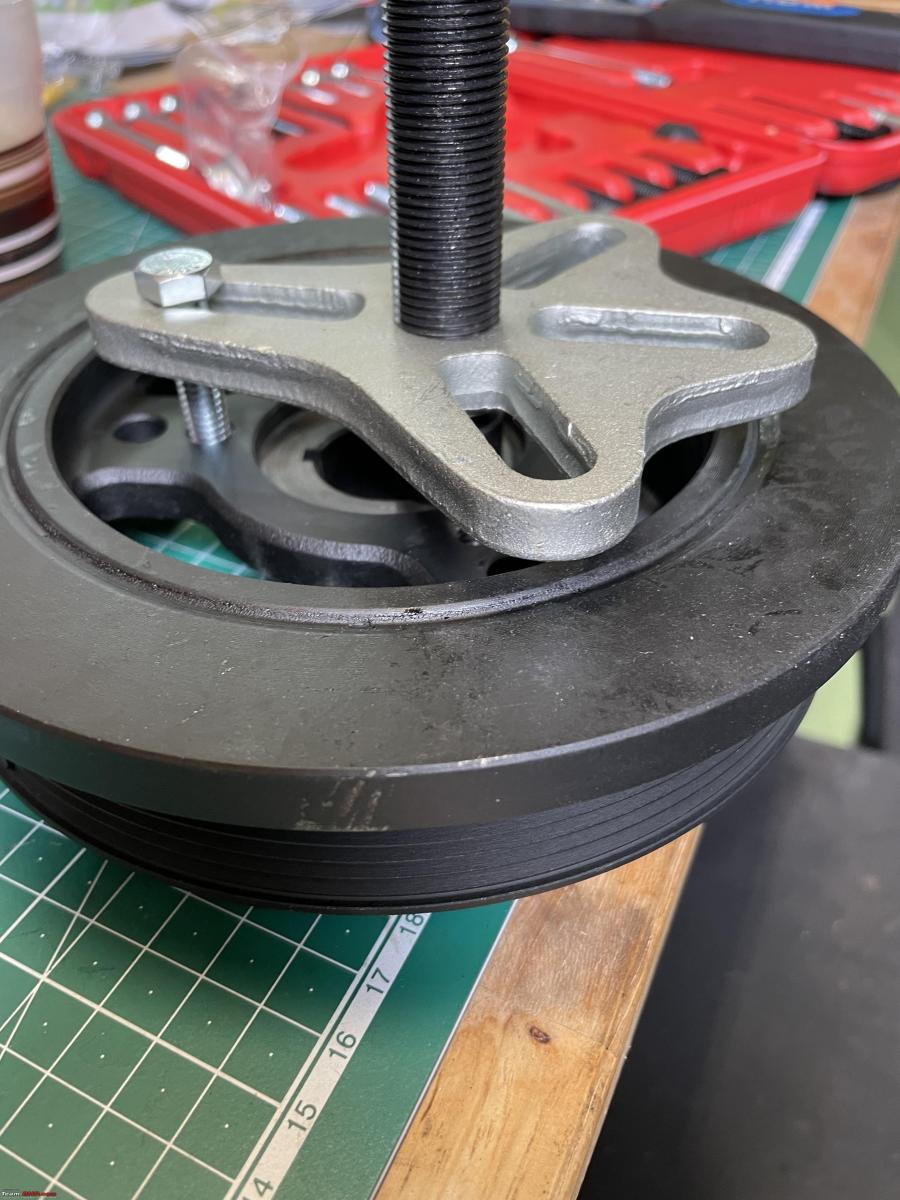
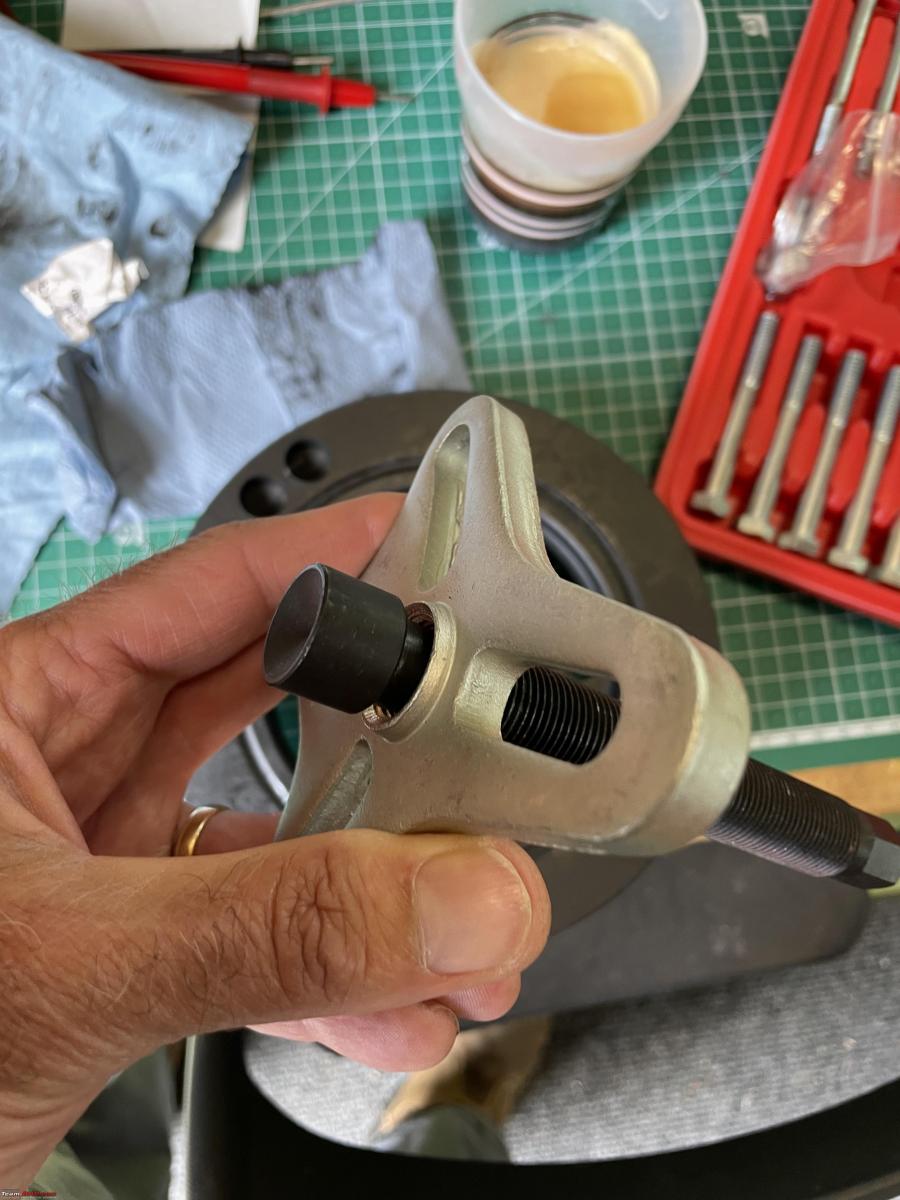
On the way to HBM, I made a little video some of you might find interesting. Sorry, for the crappy quality. You are looking at the cooling liquid temperature indicator on my Jeep Cherokee. Calibrated in Fahrenheit, obviously.
I started the engine from cold. Within a couple of minutes, I am driving on the motorway at about 90 km/h on the cruise control. Steady speed, flat road.
You will see the needle creeping upwards, as you would expect. The engine is warming up, and so is the cooling liquid. The thermostat is still closed. Pay particular attention to the needle from about 28 seconds. You will see the needle continue to indicate higher, but all of a sudden it drops (counterclockwise). This is the moment the thermostat opens! When it opens, it actually opens, initially a bit too much, and thus the temperature drops a bit, but then goes up a bit and remains steady. From here on the thermostat is open and regulates the cooling liquid temperature.
On most engines, you can observe this similar behaviour of the initial opening of the thermostat valve and the dropping of the temperature (only a few degrees) after a steady rise.
Check out BHPian comments for more insights and information.


















_0_0.jpeg)

.jpg)





